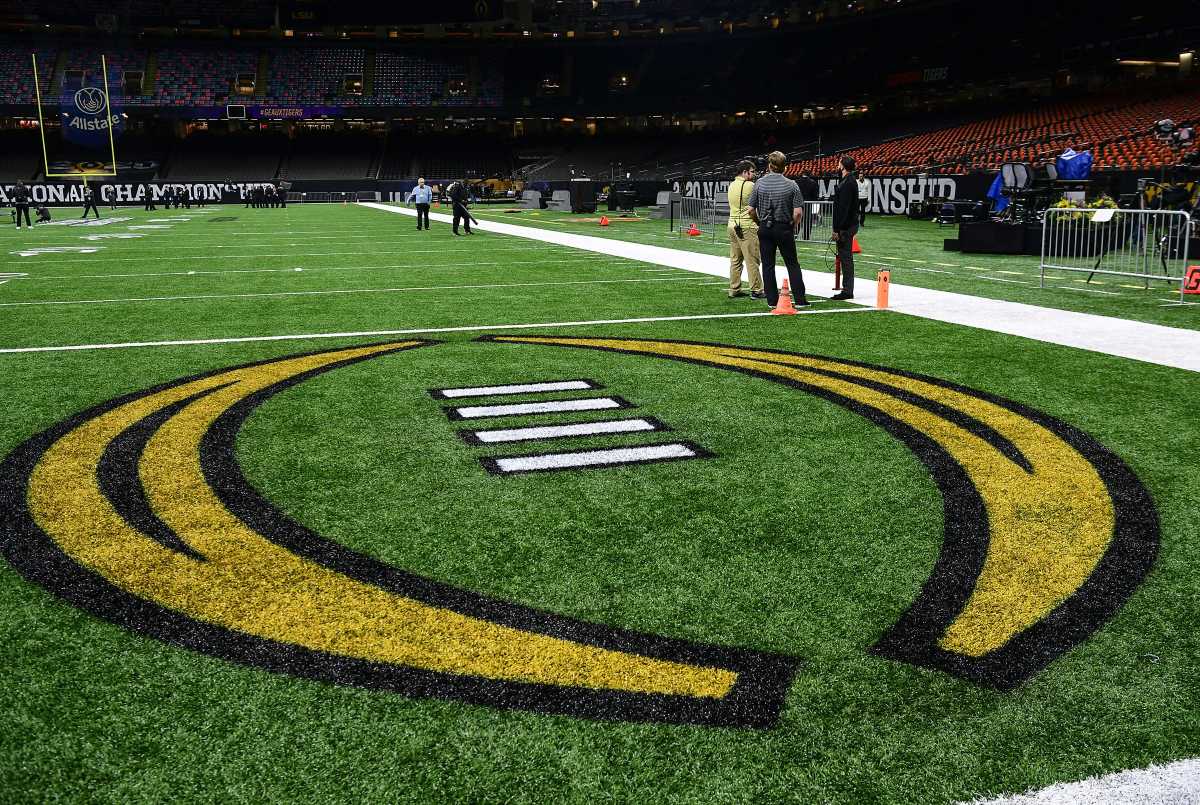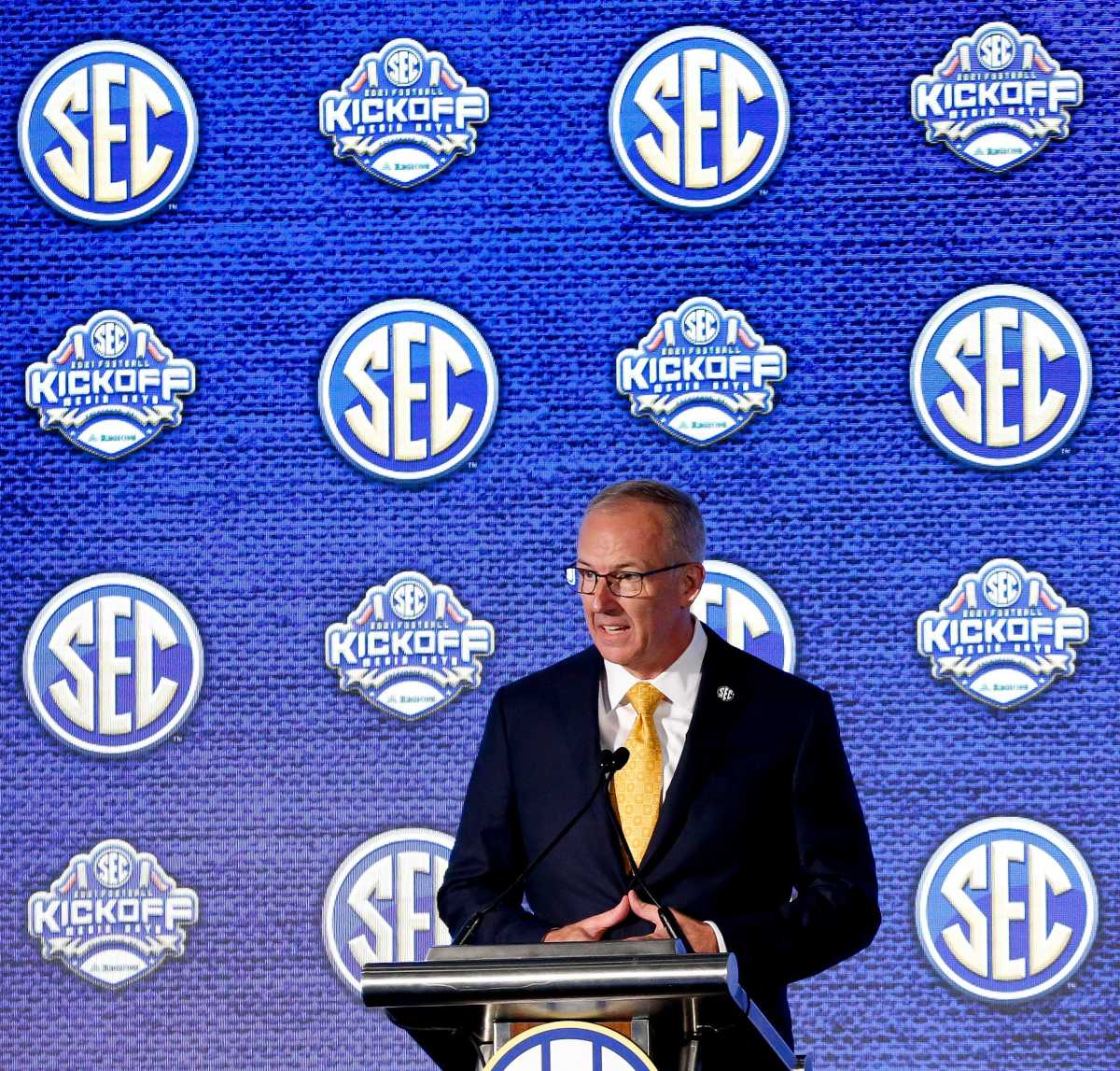So Close, Yet So Far: Why CFP Expansion Was Stalled Yet Again

DALLAS — The ground floor of the Grand Hyatt at the Dallas Fort Worth International Airport is a labyrinth of conference meeting halls and ballrooms, all connected by lavish, carpeted hallways. The rooms are stacked on top of one another, some even adjoined, each hosting a different gathering of people. It’s difficult to avoid eavesdropping.
For seven hours Wednesday, 10 of the most powerful people in college football met in a conference room here to discuss expanding the Playoff. They were obscure about it. No “College Football Playoff” signs. No banners. Nothing visual to catch the eye of a passerby.
It didn’t matter. Halfway through the day, people who were meeting in surrounding rooms began to notice.
“Is this the College Football Playoff?” one asked.
“Wow!” he said when someone confirmed the answer.
The same man grimaced hours later when the news emerged from the latest meeting of conference commissioners: no agreement.
And so on marches college football’s perpetual Playoff plight. For nearly 50 years, the sport has been squabbling about its postseason structure. Go figure, here it is again in a bitter fight over the format of an expanded Playoff.
In their fourth meeting since the 12-team expansion proposal was revealed this past summer, only slight progress was made. And while the committee appears to be inching toward a finish line that isn’t there, the main obstacle still exists: They don’t have the needed unanimous consent on a particular format, spending hours Wednesday arguing over the number of teams (eight vs. 12) and the role of automatic qualifiers (no AQs vs. some AQs vs. AQs for Power 5 champions).
Even though the committee narrowed the number of possible Playoff models to three or four, there is still no unanimous consent for any of them. During Wednesday's meeting, no vote was taken, because there were objections to each format. That means yet another meeting will be scheduled for January at the site of the national championship game in Indianapolis.

With this group, it was three steps forward and two steps back. Round and round they went, spinning in an endless loop of arguments and debates. Big 12 commissioner Bob Bowlsby and SEC commissioner Greg Sankey expressed restrained frustration after Wednesday’s meeting.
“We aren’t done,” Bowlsby said. “I wish we were. There’s no way to dance around it: We are working our way through hard issues and we disagree.”
Sankey said he arrived here “prepared to make a decision,” but those hopes were dashed.
There is increasing evidence that reaching unanimity soon is improbable if not impossible. A suggestion to make it possible: Perhaps commissioners should recommend whatever proposal gains the majority of the vote and then put it to the CFP’s executive group, the Board of Managers, to make the decision. (The board is made up of 11 school presidents representing the 10 FBS conferences and Notre Dame.)
The process is now nearing the completion of its third year. In January 2019, the Board of Managers formed a subcommittee of commissioners to create an expansion model. They toiled for two years before introducing it in June. The four-man group—Sankey, Bowlsby, Mountain West commissioner Craig Thompson and Notre Dame AD Jack Swarbrick—chose a 12-team format that granted automatic bids to the six-highest ranked conference champions and completed the field with the next six highest-ranked teams. The top four conference champions were granted first-round byes. First-round games would be played at campus sites, while quarterfinals and semifinals would be a part of a six-bowl rotation.
Over the summer, the proposal seemed to be destined for passage. It was equitable, fair and exciting. But three new commissioners, all from the Power 5, changed the dynamics in the room. Kevin Warren (Big Ten), Jim Phillips (ACC) and George Kliavkoff (Pac-12) raised concerns about the working group’s process and it grew more intense when Texas and Oklahoma announced their departure to the SEC in late July. In the wake of the realignment shakeup, the trio formed what they dubbed The Alliance, a three-league group of like-minded schools that, among other things, made a pact not to poach one another’s schools.
None of the trio of commissioners spoke to reporters after Wednesday’s meetings (some of them had to catch a flight), but other league leaders said the new blood in the room added a layer of complication.
“There are new people that have joined the organization since [the 12-team expansion] was proposed,” Thompson said. “It was a natural evolution of people getting issues and thoughts on the table. It’s a natural process.”
Over the past several months, new alternate formats have emerged. Among the models still on the table is the original 12-team format, dubbed the “6+6”; an alternate 12-team format that specifies automatic bids to each Power 5 champion and the highest-ranked Group of 5 champion, dubbed the “5+1”; and an eight-team format that either includes automatic qualifiers (6+2) or doesn’t (Best 8).
Sources tell Sports Illustrated that the ACC and Big Ten are against a 6+6, throwing their support behind either an eight-team model or the 12-team “5+1” format they introduced at the last meeting. Asked about the “5+1” model, Sankey signaled his aversion: “I’m not responsible for explaining that model or identifying whether it was discussed. I’ll let others [do that].”

Sankey also reminded reporters the SEC was not one of the conferences leading the charge in expanding the Playoff and is fine with remaining at four teams. The league has advanced at least one team in the field each year since the Playoff's inception in 2014.
“It is a reality that some who suggested we needed to [expand] are not there at this point,” Sankey said.
Meanwhile, some Group of 5 commissioners, led by the AAC’s Mike Aresco, are against a Best 8 format as it does not provide automatic access to the G5. Though it grants a G5 bid, Aresco is vehemently against the 5+1 model as it perpetuates the monikers “P5” and “G5,” two FBS groupings Aresco believes are fabricated.
Sankey and maybe several others, including Swarbrick, are against the 6+2 model as it does not provide enough at-large opportunities. Notre Dame, not affiliated with a conference, must rely on at-large selections to enter the field, and Sankey, presiding over the strongest league in college football, wants as many at-large slots as possible.
Wednesday’s meeting was expected to be the final gathering before commissioners had to take decisive action. If they want to expand by the last two years of the current CFP contract, 2024 and '25, a decision must be made soon. Passing on a 12-team Playoff is passing on $450 million in additional revenue over those two final contract years.
No one is putting a deadline on a decision date, but once one is reached, the committee will determine when an expanded Playoff can start. Many of the other issues outside of the format have either been agreed to or are realistically solvable, sources tell SI.
There were signs the committee could have realistically shut down expansion talks. In such a case, they would return in 12–18 months to determine a new Playoff contract and format that will start in 2026.
For now, within that conference room along that carpeted hallway, commissioners agreed to kick the proverbial can further down the road. And that, says Bowlsby, is a good thing.
“I’d like to be done,” Bowlsby says, “but as long as we keep progressing toward a good outcome, I’m willing to spend the time and I think others are, too.”
More College Football Coverage:
• Brian Kelly’s Brusque Exit at Notre Dame Is More of the Same
• How Lincoln Riley's Unprecedented Move Shakes the Coaching Carousel
• Expanding the College Football Postseason? We've Been Down This Road Before.
• The CFP Selection Committee Somehow Made Notre Dame a Sympathetic Figure
